Most people who visit Sanssouci Park in Potsdam make a beeline for the famous Sanssouci Palace. Sure, the palace and its terraced gardens are stunning, but honestly, there’s so much more if you’re willing to wander a bit. Let me share my top three favorite spots within Sanssouci Park—places where you can actually breathe, escape the crowds, and see a totally different side of this historic gem.
I love drifting through the park’s endless green lawns, past ornate fountains, and along quiet, tree-lined paths. There’s a thrill in stumbling upon beautiful corners most tourists never notice.
Each place on my list has its own vibe. Together, they turn an ordinary stroll into something memorable and surprisingly peaceful.
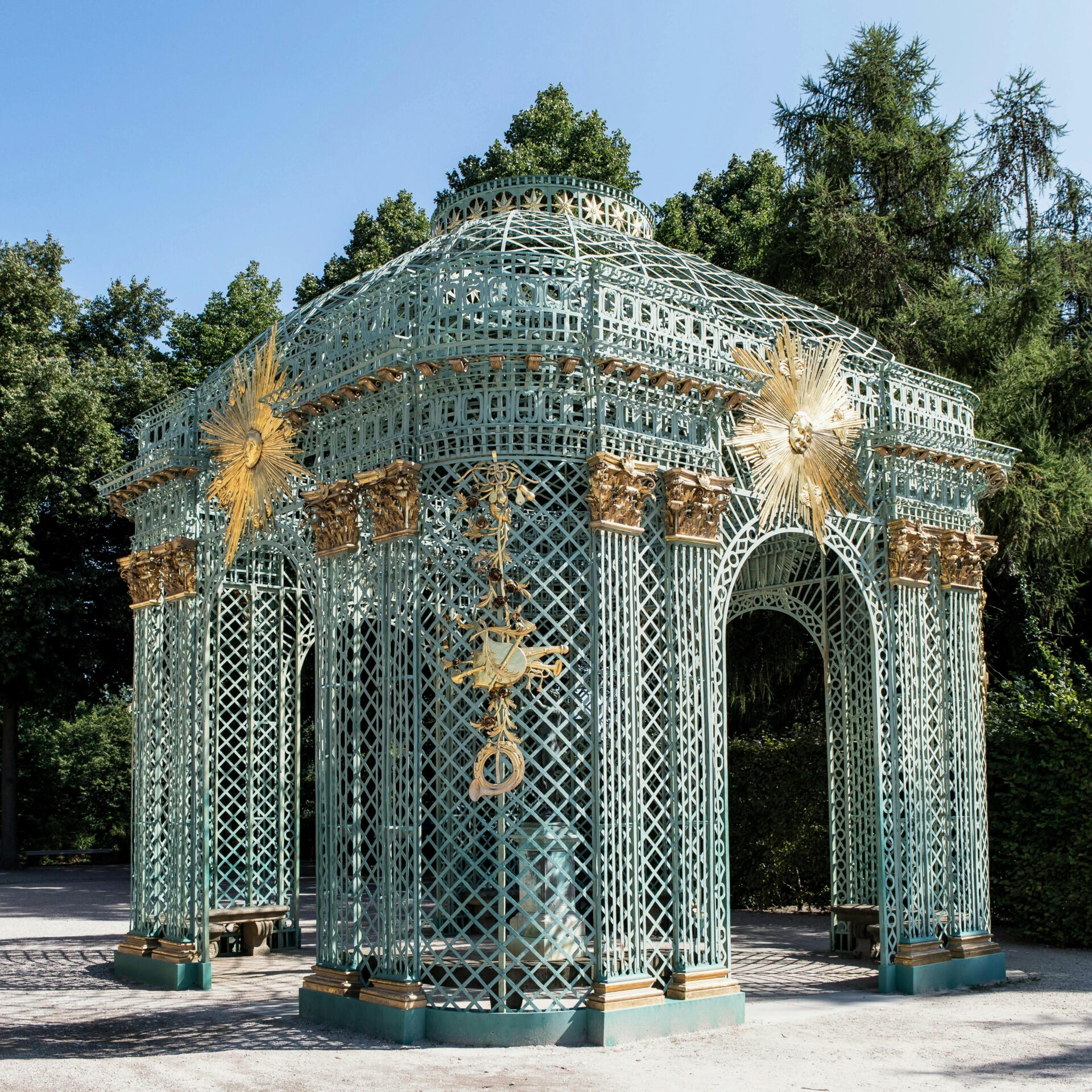
Overview of Sanssouci Park and Its UNESCO Heritage Significance
Sanssouci Park isn’t just another royal garden. It blends history, bold architecture, and creative landscape design into one massive, living work of art.
The layout, the iconic buildings, and the playful gardens all come together to make it a real highlight of German and world heritage. You feel that grandeur the moment you step inside.
Historical Background and Creation
I discovered that Frederick the Great, King of Prussia, dreamed up Sanssouci Park in the mid-1700s. He wanted somewhere to escape Berlin’s chaos and politics. “Sans souci” literally means “without worry” in French—pretty fitting, right?
The park grew around the original Sanssouci Palace, finished in 1747. Later Prussian royals kept adding palaces and gardens, so the place just kept expanding.
You can really sense the ambition of the Prussian kings here. They wanted to show off their power and culture. These days, the Prussian Palaces and Gardens Foundation Berlin-Brandenburg takes care of it all, making sure the legacy sticks around.
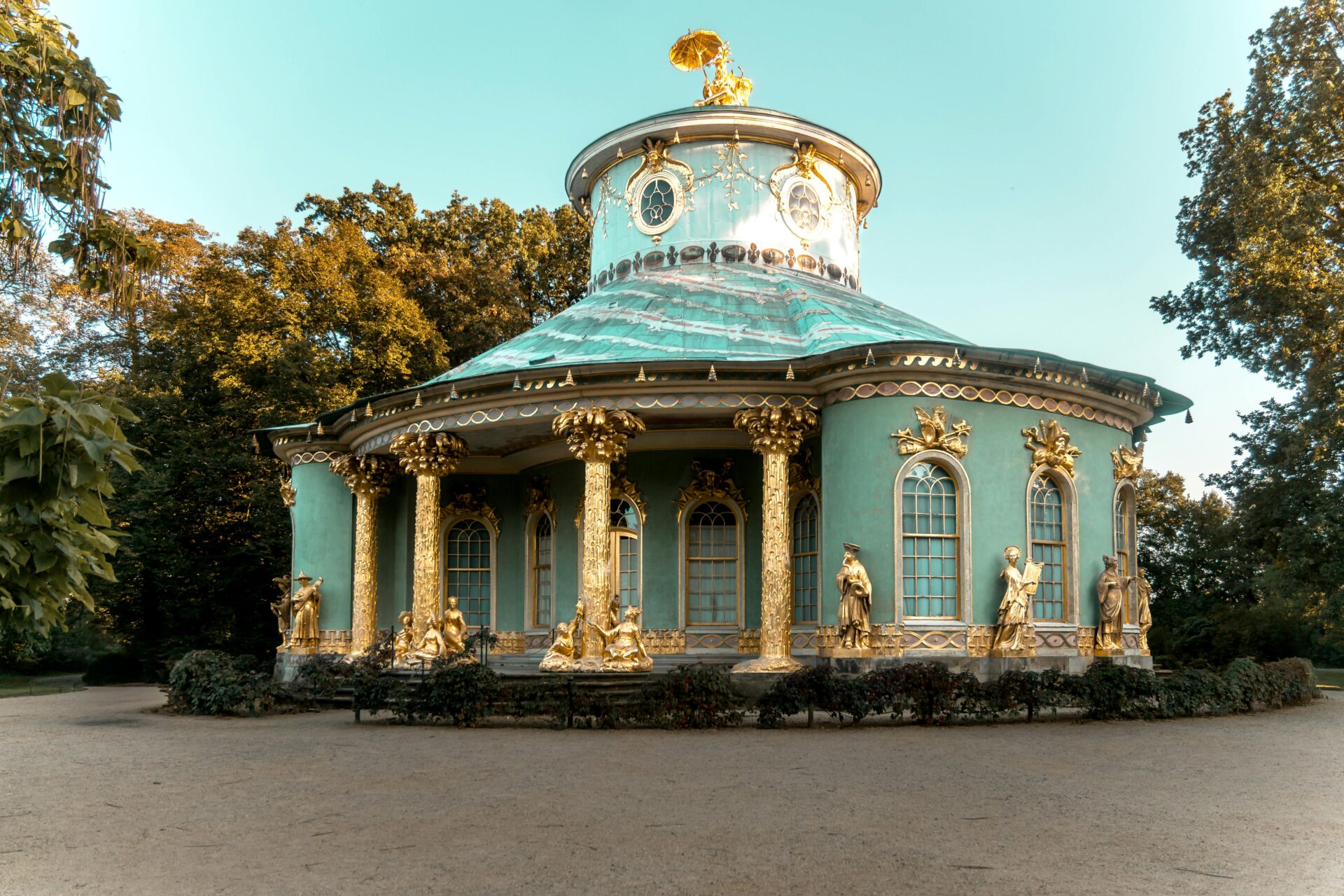
Notable Palaces and Structures
Sanssouci Palace grabs most of the attention, with its Rococo style and that cheerful yellow front. The terraced vineyards below it are a sight, even from far away.
But there’s so much more. The New Palace sits at the park’s western edge, built later in the 1700s, and it really shows off the royal family’s growing wealth. The Orangery Palace is another showstopper—its long façade and grand halls were made for royal gatherings.
Don’t miss the Chinese Tea House, with its quirky Asian-inspired look, or the Historic Windmill that nods to the park’s everyday roots. Scattered temples and decorative buildings pop up as you explore, each one a little surprise waiting to be found.

Gardens, Landscapes, and Design Influences
The park sprawls across about 290 hectares—gardens, vineyards, woods, and water features everywhere you turn. I’m always amazed by how neatly the gardens are arranged, with fountains, flower beds, and statues all in their place.
Peter Joseph Lenné, the landscape architect, left a huge mark on the park’s look in the 19th century. He used strict geometry near the palaces but let things get more natural and winding further out.
You can spot influences from both French and English garden traditions here. The Prussian rulers clearly wanted to impress their guests and show they knew a thing or two about European style. Today, Sanssouci Park ranks as one of Germany’s most visited UNESCO World Heritage Sites, especially within the Palaces and Parks of Potsdam and Berlin group.
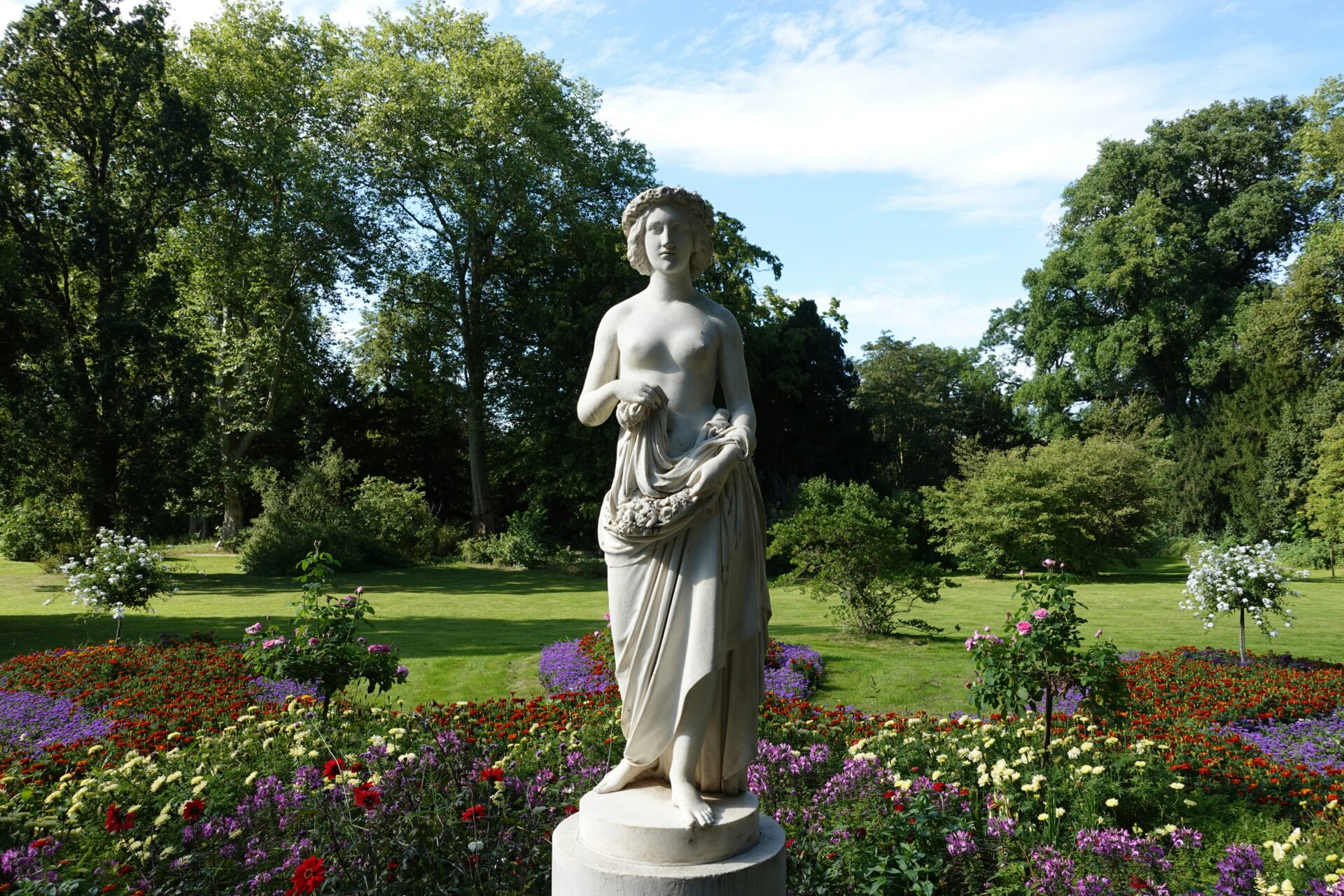
Why Explore Beyond Sanssouci Palace?
Honestly, Sanssouci Park is so much more than just the palace. When I venture out into the rest of the park, I find secret gardens, hidden gems, and a much calmer vibe away from the main crowds.
Limitations of the Main Palace Experience
Every time I visit Sanssouci Palace, I notice the same thing: the opening hours are short, and tickets often sell out, especially on weekends or holidays. The lines can get long, and sometimes I end up waiting just to get inside.
Inside, the rooms are gorgeous but packed. Most areas are roped off to protect the interiors, and taking photos is usually a no-go. Guided tours rush you through, so there’s barely a moment to soak it all in. I often leave feeling like I missed something.
Focusing only on the palace means missing out on so many other corners—the gardens, side buildings, and quiet spots most people skip. There’s a whole other side to Sanssouci Park if you’re willing to wander.
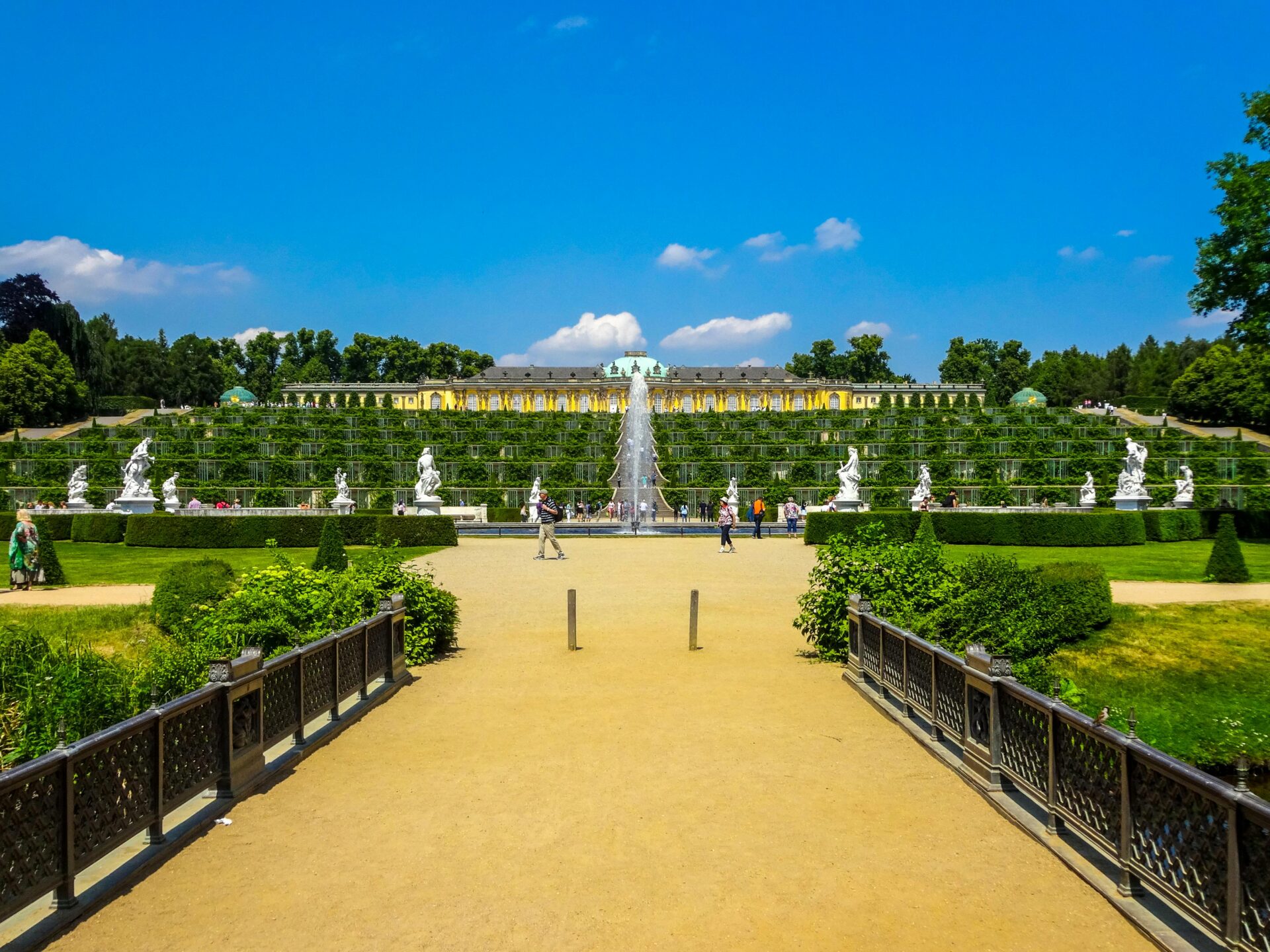
Greater Relaxation and Unique Perspectives
Once I step away from the palace, I stumble onto peaceful gardens, shaded walks, and quirky spots like the Chinese House and Orangery Palace. These areas are way less crowded, so I can actually relax. Sometimes I bring a picnic and just lounge under the trees—try doing that inside the palace!
Exploring the wider park also reveals more of Potsdam’s story. The terraced vineyard near the palace shows how the kings used the land, while the Roman Baths feel like stepping into another world.
The park stays open longer than the palace, so I can wander until sunset if I want. The further I go, the more I feel like I’m discovering something special—my own little slice of history.

Favorite Spot #1: The Orangery Palace and Italian Gardens
The Orangery Palace always catches my eye with its grand, Italian-inspired vibe. There’s something about the mix of Renaissance architecture, lush gardens, and all the little details that makes this area feel truly magical.
Orangery Palace Highlights
The Orangery Palace is actually the largest palace in Sanssouci Park. King Frederick William IV built it in the 19th century, taking cues from the Villa Medici in Florence. The long building, with its two high towers and broad terraces, is pretty hard to miss.
Inside, you’ll find ornate halls, a collection of Italian paintings, and elegant rooms that once hosted guests and artists. Wandering those wide halls, I can almost picture the royal events that took place here. Guided tours dive into the art and history, but honestly, it’s usually much quieter than the main palace.
There’s also a massive orangery—a greenhouse for citrus trees and exotic plants during the cold months. It’s a cool reminder of how much royals loved their rare plants back in the day.
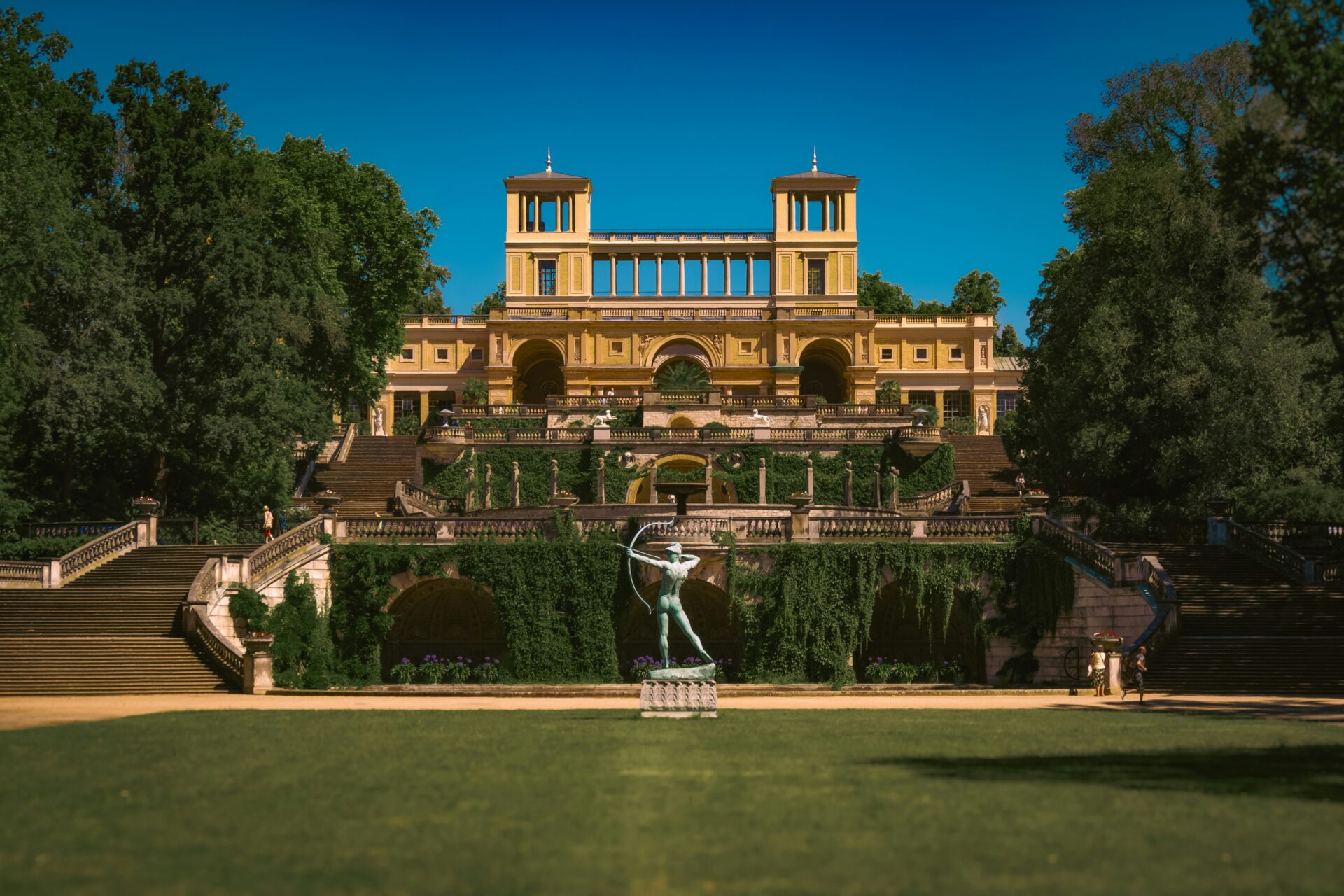
Statues and Fountains in the Italian Gardens
The Italian Gardens in front of the Orangery Palace are a work of art on their own. Perfectly symmetrical flower beds, neat hedges, and rows of orange and lemon trees bring a bit of the Mediterranean to Potsdam.
Statues line the paths, each one inspired by Greek and Roman myths. I like to stop and check out the details—some are pretty quirky. Fountains bubble away in the background, which adds a calming soundtrack to the whole scene.
Benches are scattered around, so it’s easy to just sit and take everything in. The gardeners keep the place spotless, and the flowers change with the seasons, so no two visits feel exactly the same.

Views and Photography Opportunities
The terrace steps at the Orangery Palace give you sweeping views over the gardens and across Sanssouci Park. On a clear day, you can spot treetops and even some of the smaller buildings in the distance.
This spot is a dream for photographers. The sharp lines of the gardens, the palace in the background, and those white statues against all that green—there’s a photo at every turn. Morning light brings out the details, while afternoons are perfect for exploring shady paths.
Sometimes I just use my phone, snapping close-ups of flowers or wide shots of the whole scene. Even if you’re not into photography, it’s worth pausing here and just soaking it all in.
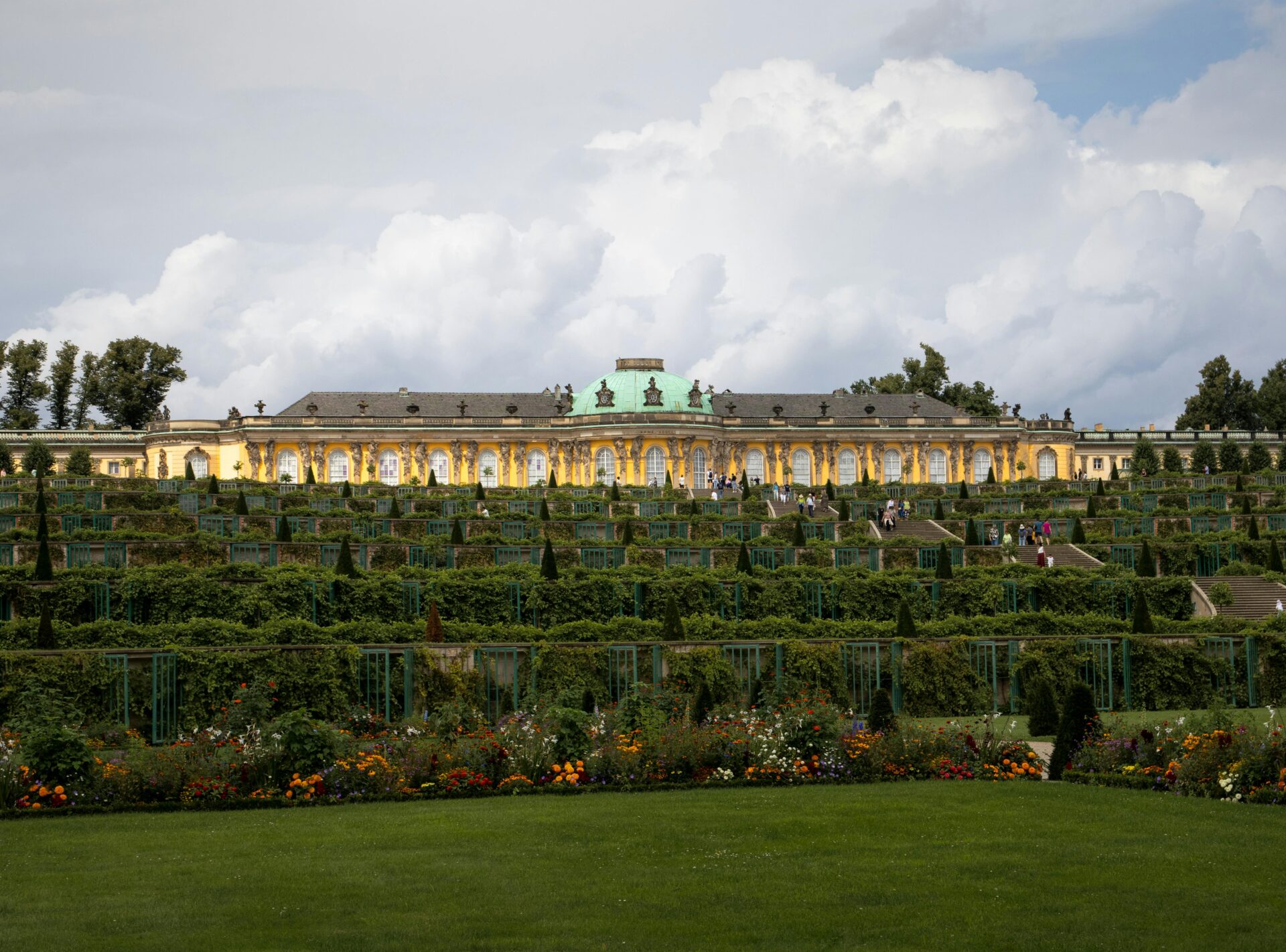
Favorite Spot #2: The Chinese House and Its Unique Charm
The Chinese House is a real standout in Sanssouci Park—delicate rococo architecture meets playful, Asian-inspired fantasy. There’s history here, sure, but the visual details make it unforgettable, especially as the seasons change and the mood around it shifts.
The Story Behind the Chinese Tea House
Frederick the Great had the Chinese House built in the mid-1700s, inspired by his fascination with East Asian culture. It wasn’t really for Chinese guests, but more for royal tea parties and lazy afternoons.
This little pavilion is a classic example of “Chinoiserie”—Europe’s obsession with Asian art and design back then. The Chinese House gave royals a break from daily politics. I think it says a lot about that era’s longing for something exotic, even if it was just for a stroll or a cup of tea.
Now, the Chinese House welcomes visitors from all over. Its story adds a layer of cultural curiosity to any walk through the park. I can almost hear the echoes of lively gatherings inside.
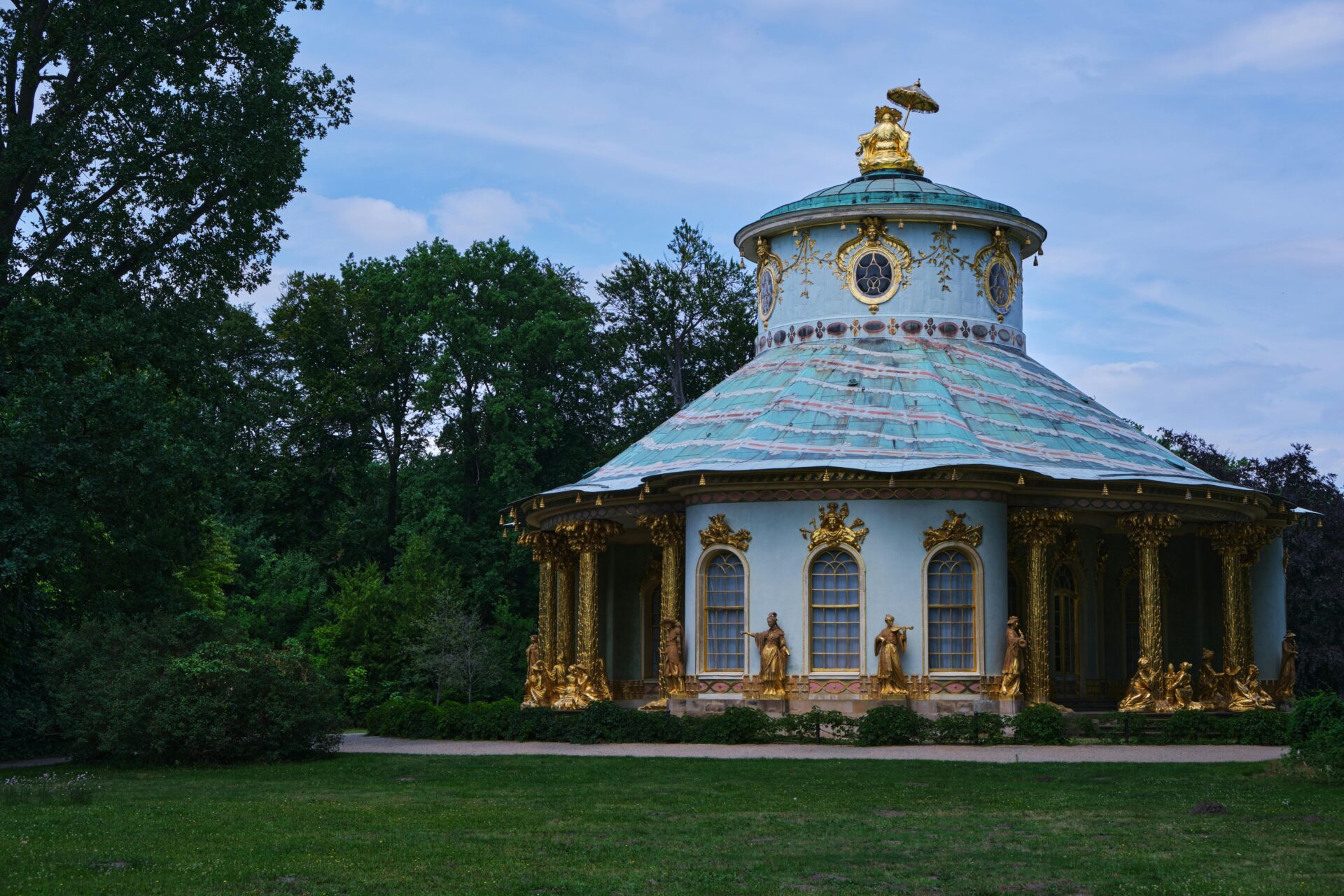
Rococo Architecture and Ornamental Details
The pavilion itself is pure rococo—playful, ornate, and just a bit over the top. Tall columns shaped like golden palm trees ring the round building. Gilded bronze figures of musicians, servers, and monkeys perch along the outside, catching the sunlight.
The costumes are all based on what Europeans thought Chinese fashion looked like back then. Painted flowers and porcelain plates add even more detail. I always take a moment to admire the curved roof and the blue-painted ceilings inside.
The garden around the house is kept pretty simple, which lets the gold and colors really pop. It’s easy to spot from far away, but the real magic is up close, where every detail stands out.
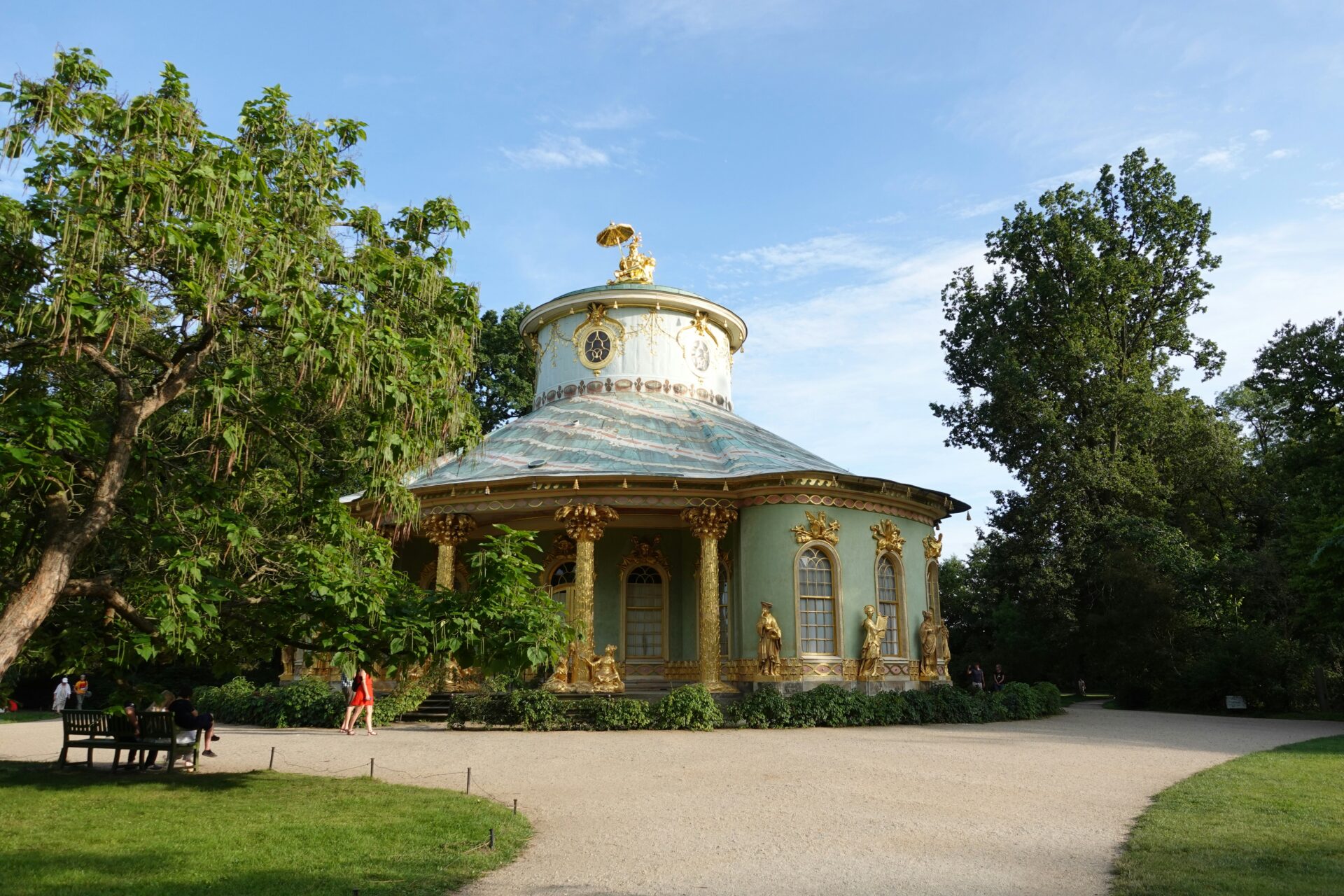
Seasonal Changes and Atmosphere
The Chinese House changes with the seasons. In spring, it pops against blooming bushes and fresh green grass. The gold seems to glow a little brighter.
Summer brings more visitors, but the shade from the trees makes it a nice spot to rest. In autumn, fallen red and yellow leaves frame the pavilion in color. I especially love the place in late afternoon light—everything feels warm and a bit nostalgic.
Winter is a different story. Snow dusts the roof and statues, making the gold stand out even more. It’s quiet, almost meditative, and I like stopping by even when it’s cold. Every season gives you a new reason to come back and notice something different.
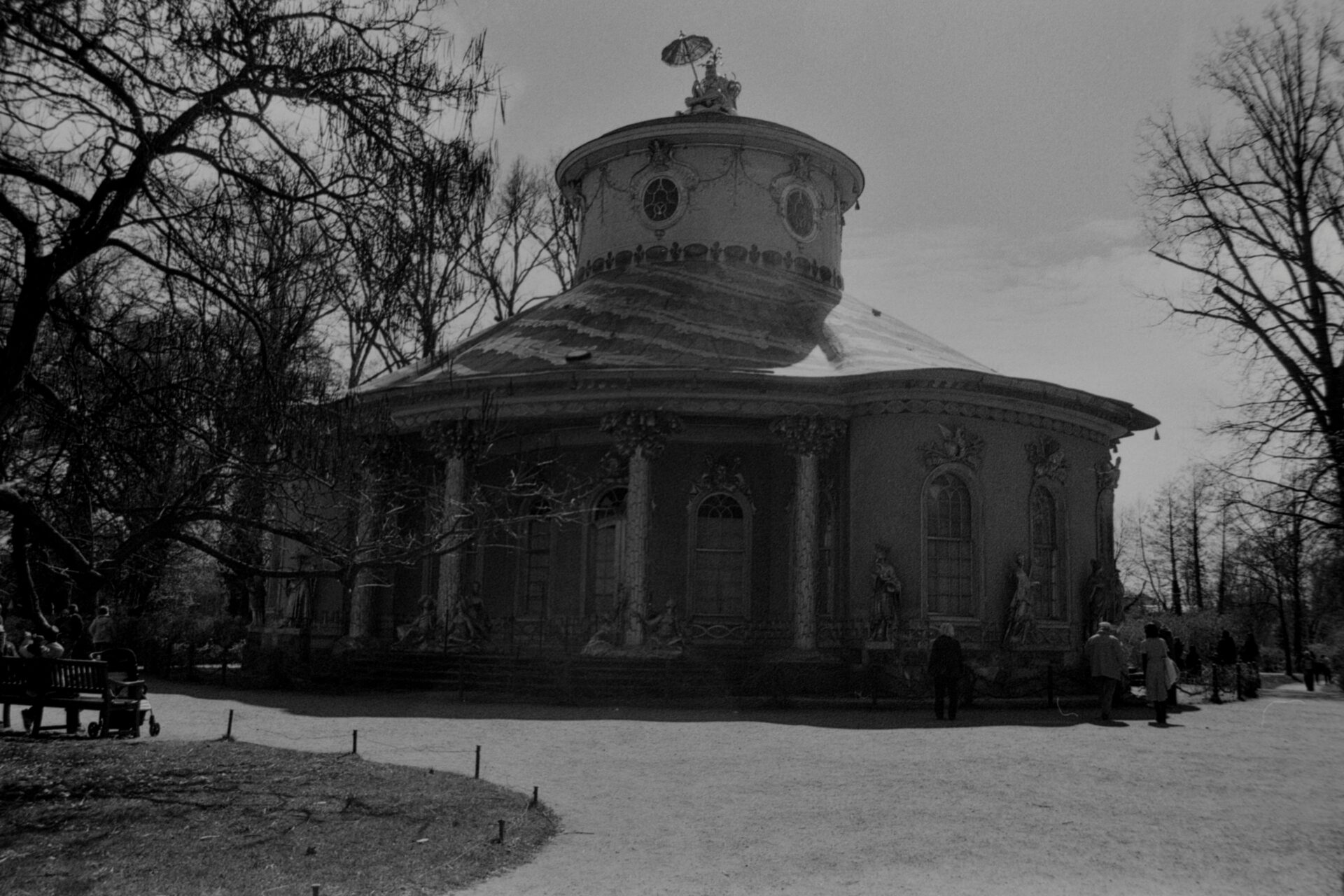
Favorite Spot #3: Roman Baths and Charlottenhof Palace Ensemble
If you wander a bit farther from the main crowds, you’ll find the Roman Baths and nearby Charlottenhof Palace. These two spots together create a peaceful escape, with historic architecture and quiet garden paths full of little details waiting to be discovered.
Exploring the Roman Bath Complex
If you’re wandering northeast of Charlottenhof Palace, you’ll stumble across the Roman Bath—a real gem in Sanssouci Park, especially for anyone drawn to architecture or history. It’s not actually an ancient Roman bath, but a romantic reimagining built between 1829 and 1840, inspired by Italian and Roman styles.
Frederick William IV absolutely loved all things Italian, and you can see that passion everywhere here. The arched windows, those tiled roofs, and the charming courtyards all carry a hint of Italy. Honestly, the whole place feels like a secret slice of the Mediterranean tucked into Potsdam.
Every time I walk through the Roman Bath, I catch myself pausing at little details—old stonework, a “ruin” that’s more decorative than ancient, and quirky wall ornaments. There are cozy rooms, a sunlit loggia, and even a garden pergola that’s perfect for daydreaming.
It’s usually much quieter here than in the busier corners of the park. I love that. You can actually hear yourself think, or just relax on a shady bench for a while.
Artists and photographers seem to flock here, probably because the building stands out so much from the rest of Potsdam. There’s just something about it that begs to be sketched or snapped.
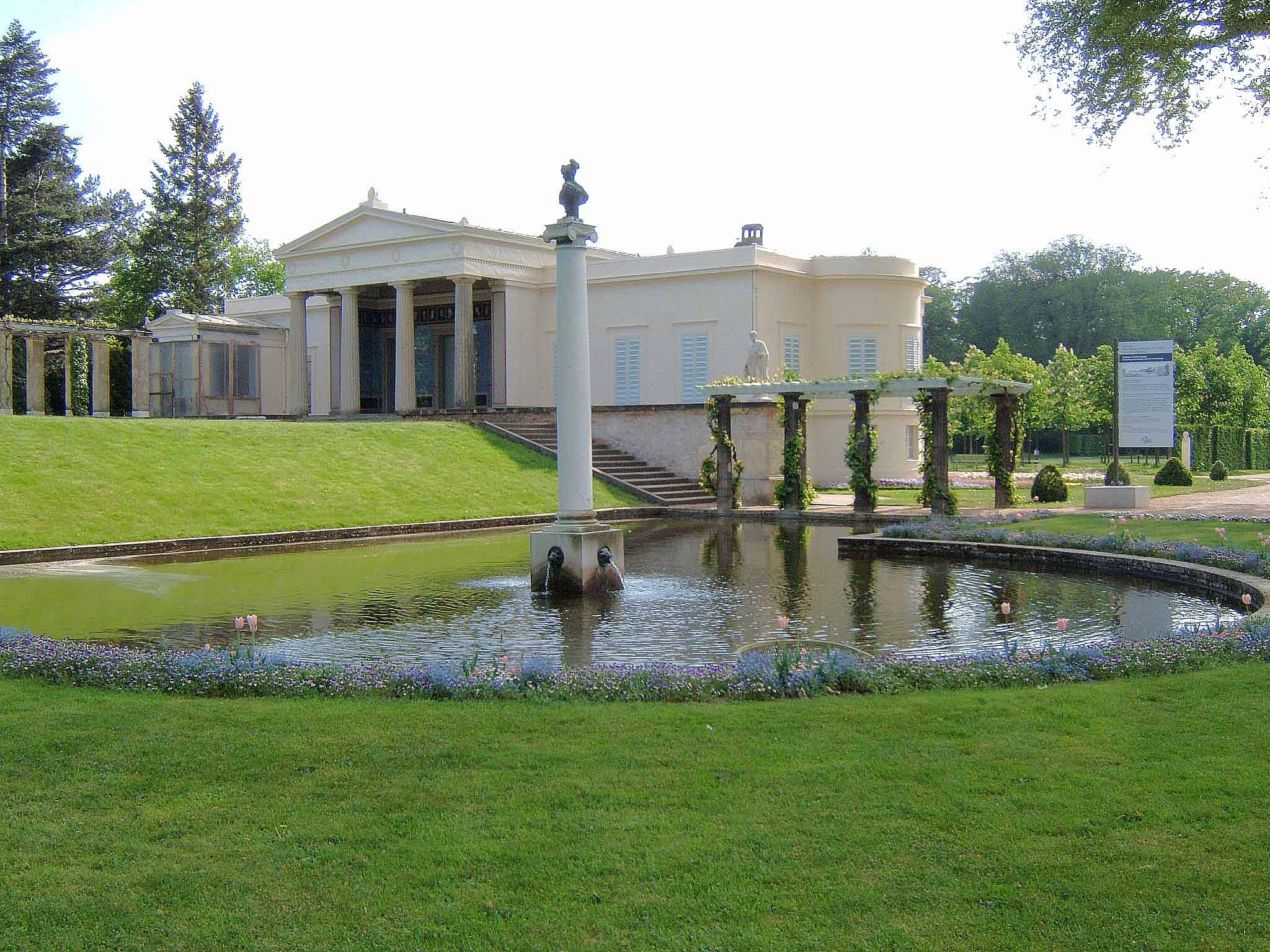
Charlottenhof Palace and Its Gardens
If you head just south from the Roman Bath, you’ll find Charlottenhof Palace. It’s a neoclassical beauty, but on a smaller, more personal scale than the grand Sanssouci Palace. Karl Friedrich Schinkel designed it for Crown Prince Frederick William between 1826 and 1829.
The palace’s white walls and blue shutters always catch my eye—they’re so simple, yet so striking.
Inside, sunlight fills the rooms, which show off classical themes in the décor. The Tent Room is a favorite of mine, all blue and white, meant to feel like a Roman tent. Somehow, the interiors always feel peaceful, almost like you’ve stepped out of time.
Gardens and parkland wrap around the palace, carefully planned by Peter Joseph Lenné. You’ll find straight paths, wide lawns, and clusters of trees. Statues and bright flower beds line the way, offering plenty of spots to pause and take in the view.
Charlottenhof and the Roman Baths together make this corner of Sanssouci Park feel more intimate. The pace slows down here, and you get a real sense of how different tastes shaped the park beyond the main palace.
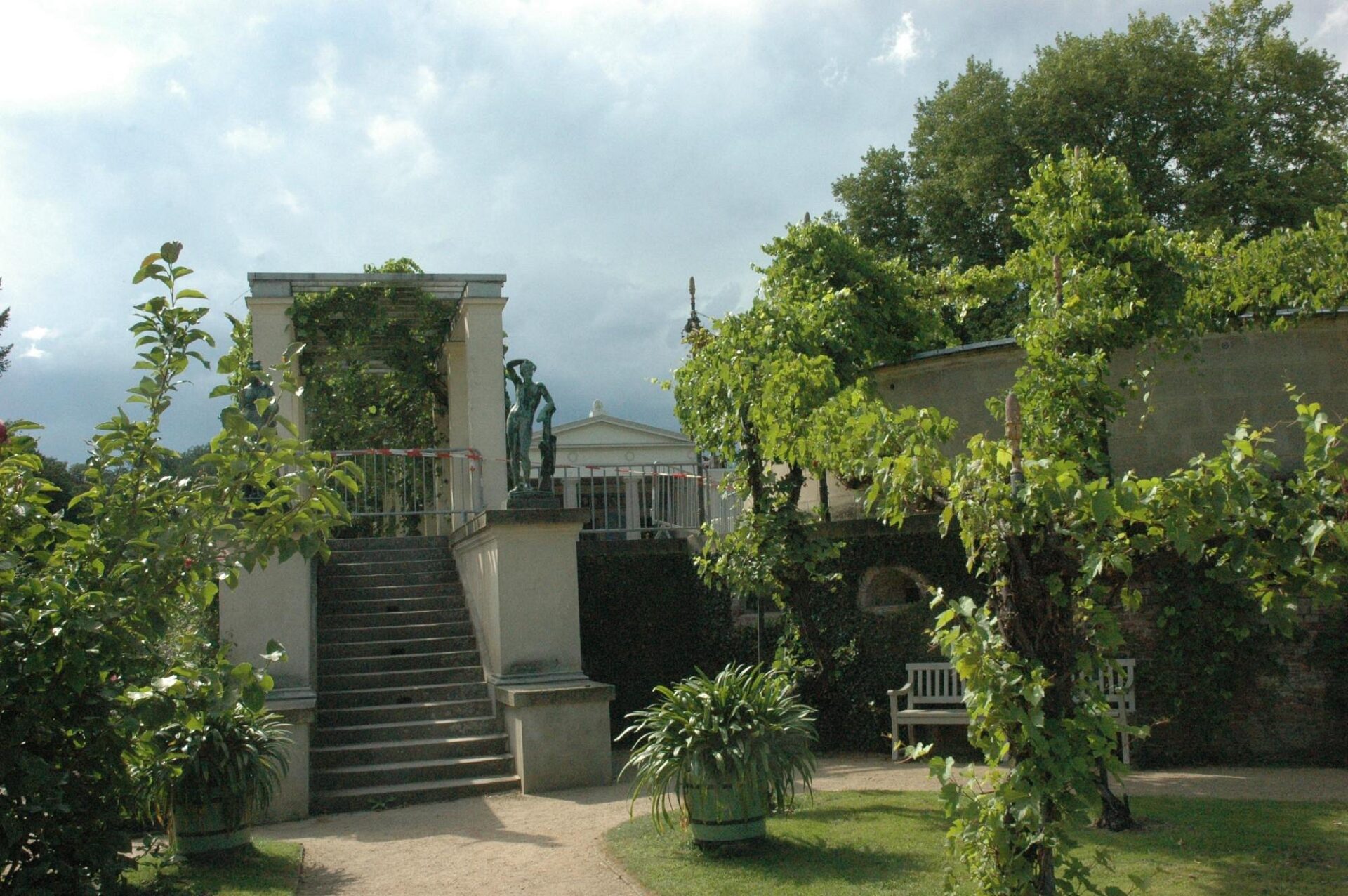
Tips for Making the Most of Your Potsdam Stroll
How you plan your visit—when you go, how you get there, and what you seek out—makes all the difference in Sanssouci Park. I’ve found that with just a little preparation, you can dodge the crowds, discover hidden corners, and turn a day in Potsdam into something special.
Best Times to Visit for Tranquility
If you want peace, go early. I love arriving in the morning, when the light’s gentle and the air feels fresh. You can wander the gardens and paths almost alone, at least until the first tour buses show up.
Weekdays, especially from Tuesday to Thursday, tend to be much quieter. Spring and early autumn hit that sweet spot: pleasant weather, fewer crowds. In winter, the park feels almost deserted—just know that some smaller spots might be closed or have limited hours.
Tips to remember:
- Early mornings are the quietest.
- Try to avoid school vacation periods.
- Wear good shoes—there’s a lot of ground to cover, with over 70 km of walkways.
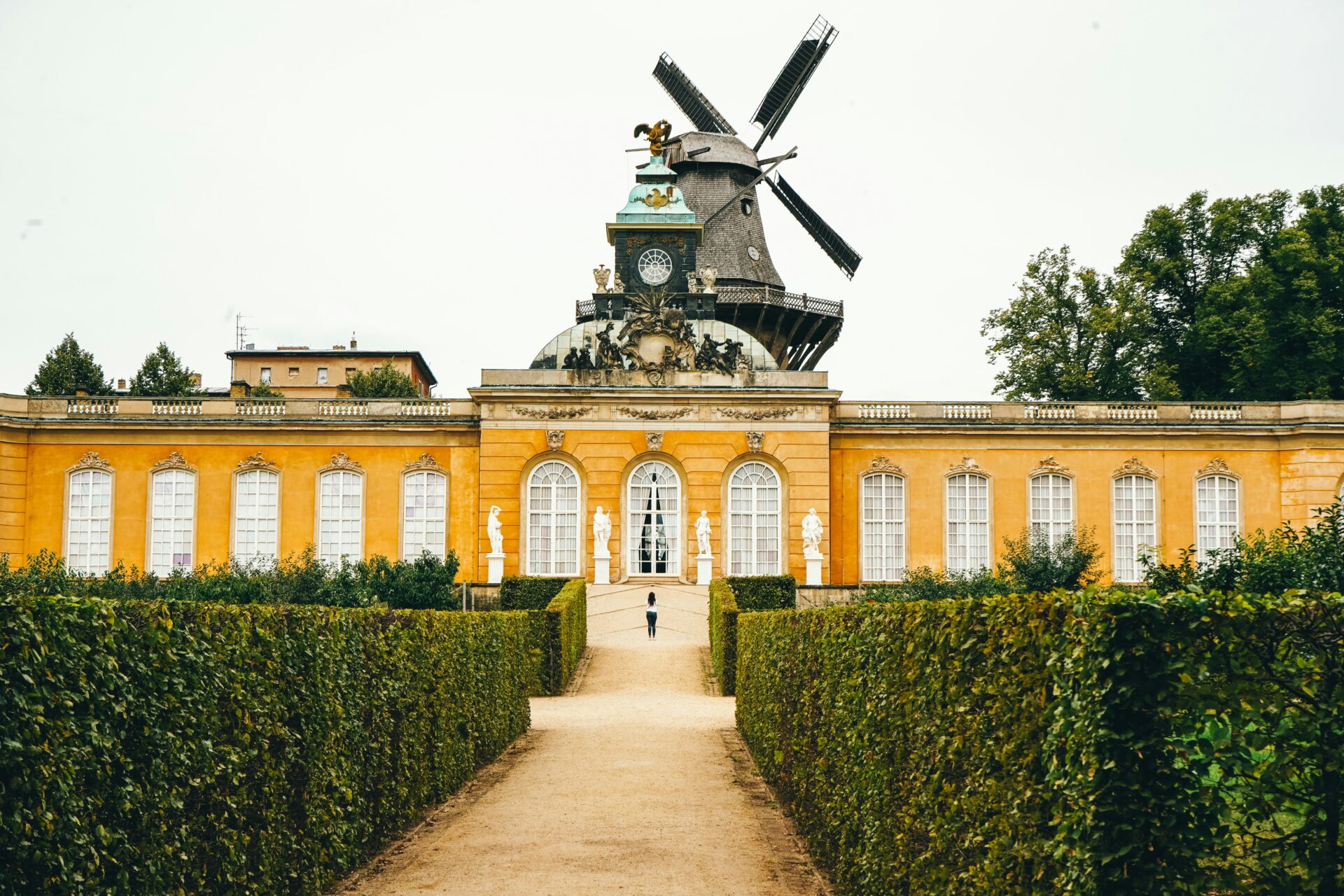
Getting to Sanssouci Park from Berlin
Getting to Potsdam from Berlin is honestly a breeze. I usually hop on the S-Bahn (S7 line) from central stations like Hauptbahnhof or Friedrichstraße. The ride takes about 40 minutes, and it’s pretty straightforward.
Once you reach Potsdam Hauptbahnhof, you can grab a local bus (lines 695 or 606) that heads right to the main entrance of Sanssouci Park. If you’d rather stretch your legs, it’s about a 20-minute walk through the city center to the park gates. Train and bus tickets both fall under the Berlin ABC fare zone—I always buy mine ahead of time, just to keep things simple.
Route summary:
| Step | Example | Approx. Time |
|---|---|---|
| S-Bahn (S7) | Berlin to Potsdam | ~40 min |
| Bus (695 or 606) | Station to Park | ~10 min |
| Walk (optional) | Through Potsdam | ~20 min |

Additional Noteworthy Attractions Nearby
Besides the main palace, Sanssouci Park hides a few gems I think you shouldn’t miss. The Historic Mill (Historische Mühle), sitting close to the palace, still turns—it’s a living piece of local history.
The Bildergalerie feels like a secret spot. This art gallery holds some stunning paintings and usually stays pretty quiet, which I always appreciate.
If you wander up to Ruinenberg, you’ll find artificial ruins and, honestly, one of the best views over the gardens. It’s a bit of a climb, but the perspective makes it worth the effort.
Step just outside the park and the Dutch Quarter in Potsdam totally changes the vibe. Brick houses line the streets, and you’ll find cozy cafés and quirky little shops scattered around.
All these spots bring a lot more character to a day at Sanssouci Park. They make exploring the whole Potsdam area feel like a real adventure.

